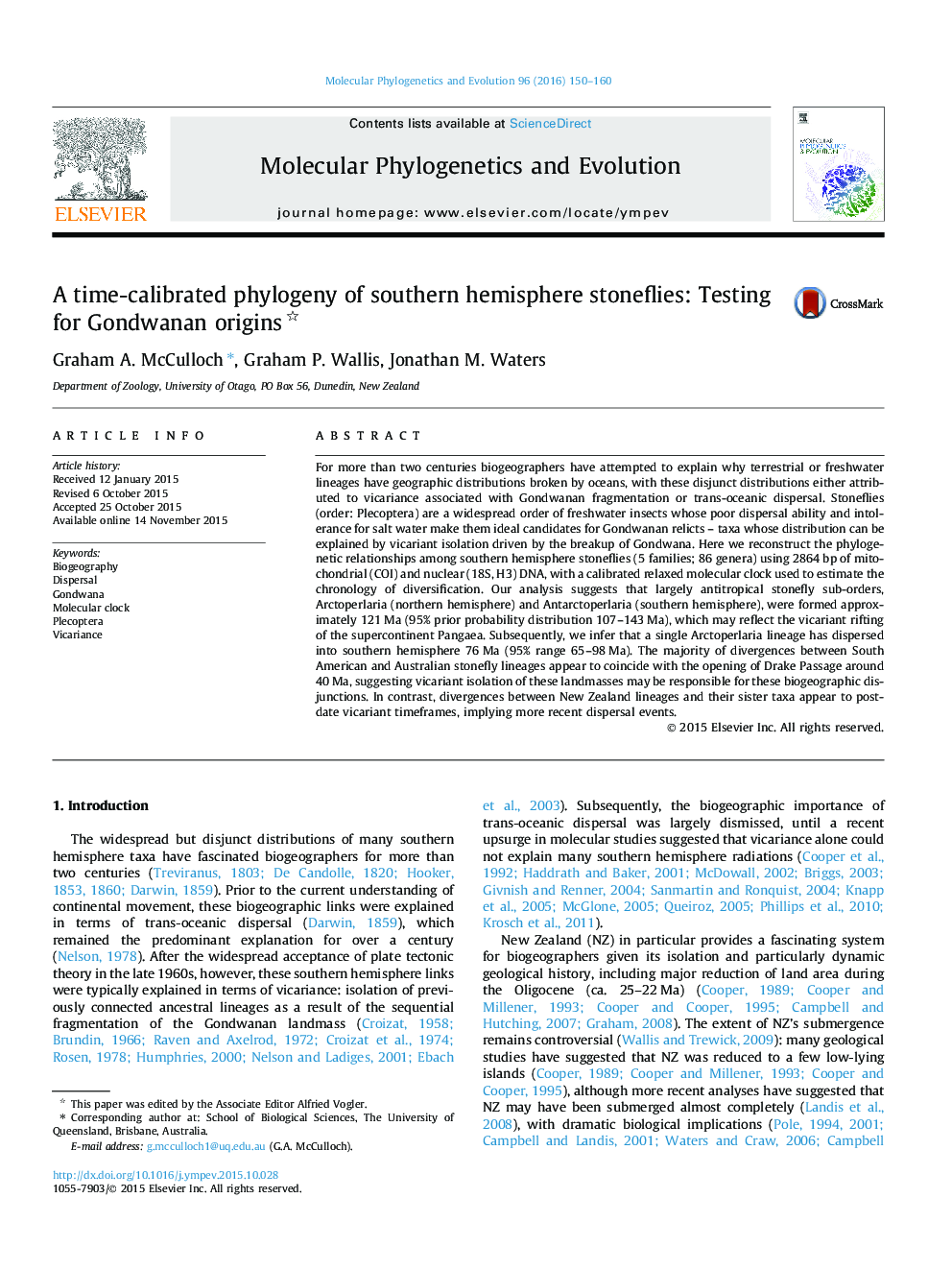| کد مقاله | کد نشریه | سال انتشار | مقاله انگلیسی | نسخه تمام متن |
|---|---|---|---|---|
| 2833749 | 1570801 | 2016 | 11 صفحه PDF | دانلود رایگان |
• Reconstructed a time-calibrated phylogeny of southern hemisphere stoneflies.
• Antitropical sub-orders likely diverged due to the ancient rifting of Pangaea.
• Temporal splits between Australian and South American lineages support vicariance.
• New Zealand lineage divergence times suggest post-Gondwanan dispersal events.
For more than two centuries biogeographers have attempted to explain why terrestrial or freshwater lineages have geographic distributions broken by oceans, with these disjunct distributions either attributed to vicariance associated with Gondwanan fragmentation or trans-oceanic dispersal. Stoneflies (order: Plecoptera) are a widespread order of freshwater insects whose poor dispersal ability and intolerance for salt water make them ideal candidates for Gondwanan relicts – taxa whose distribution can be explained by vicariant isolation driven by the breakup of Gondwana. Here we reconstruct the phylogenetic relationships among southern hemisphere stoneflies (5 families; 86 genera) using 2864 bp of mitochondrial (COI) and nuclear (18S, H3) DNA, with a calibrated relaxed molecular clock used to estimate the chronology of diversification. Our analysis suggests that largely antitropical stonefly sub-orders, Arctoperlaria (northern hemisphere) and Antarctoperlaria (southern hemisphere), were formed approximately 121 Ma (95% prior probability distribution 107–143 Ma), which may reflect the vicariant rifting of the supercontinent Pangaea. Subsequently, we infer that a single Arctoperlaria lineage has dispersed into southern hemisphere 76 Ma (95% range 65–98 Ma). The majority of divergences between South American and Australian stonefly lineages appear to coincide with the opening of Drake Passage around 40 Ma, suggesting vicariant isolation of these landmasses may be responsible for these biogeographic disjunctions. In contrast, divergences between New Zealand lineages and their sister taxa appear to post-date vicariant timeframes, implying more recent dispersal events.
Figure optionsDownload as PowerPoint slide
Journal: Molecular Phylogenetics and Evolution - Volume 96, March 2016, Pages 150–160
